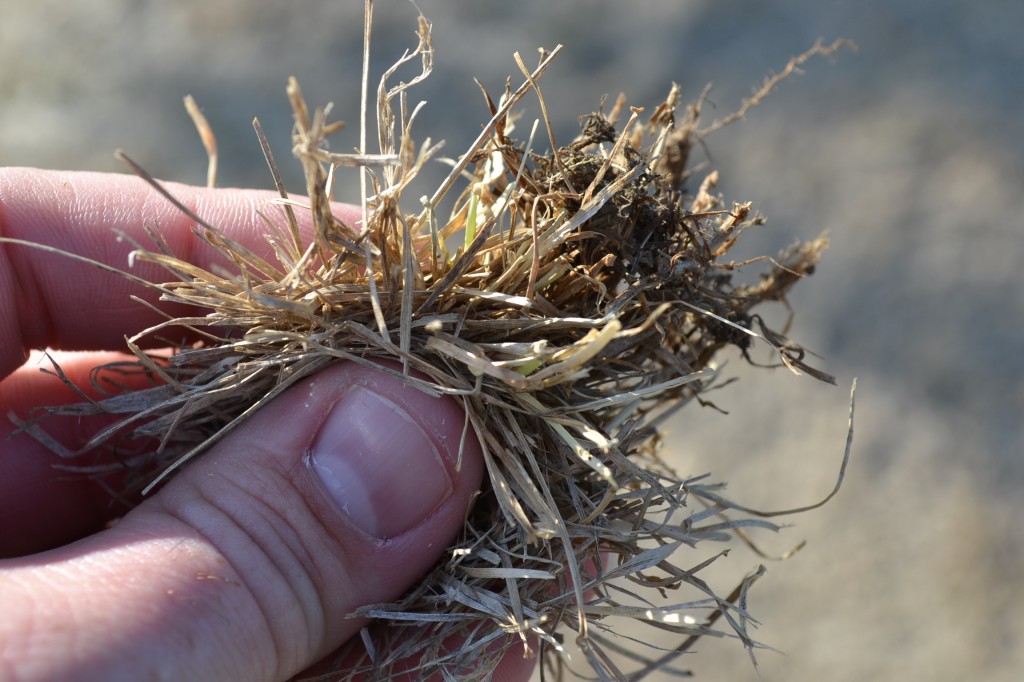If you have turf grass, you have lawn thatch. Most people don’t know what lawn thatch is or the pro’s and con’s of the material. To properly understand how thatch can work for your lawn or against it, you must first understand how it forms. Lawn thatch is the layer of living and dead grass stems, grass blades and roots found between the soil and the living grass tips. The material is normally found in actively growing turf grass. Thatch can insulate the grass root system with a healthy layer of cover or stop the flow of moisture and nutrients in unhealthy layers.
Some of the benefits of lawn thatch include:
- Thatch helps shade the root system of the grass from the sun, which helps reduce moisture loss.
- Reduces the soil temperature in the summer time.
- Acts as a natural barrier to help prevent weed development.
- Supplies a food source.
- Helps reduce damage caused by high traffic on the turfgrass.
- Filters waterflow to the soil.
Unhealthy layers of thatch can harm your lawn by:
- Blocking water and other nutrients from reaching the soil if the thatch layer is over 1/2 inch thick.
- Causes shallow root development in new grass plants.
- Reduces the flow of air between the tip of the grass blades and the soil.
- Increases the chance of some fungal outbreak and insect infestation.
What to do if you your lawn has a thatch layer that is over 1/2 inch thick or more.
- Dethatch your lawn by using hand tools or a power rake. A power rake is a machine designed to remove thatch by grabbing the thatch with metal tines and pulling it from the grass.
- Aerate your lawn. Core Aeration is one of the best ways to lower your thatch level. If you core aerate your lawn, the plugs left on top of the ground will help naturally decompose the thatch layer. Aeration is less labor intensive than dethatching and has more natural benefits.

